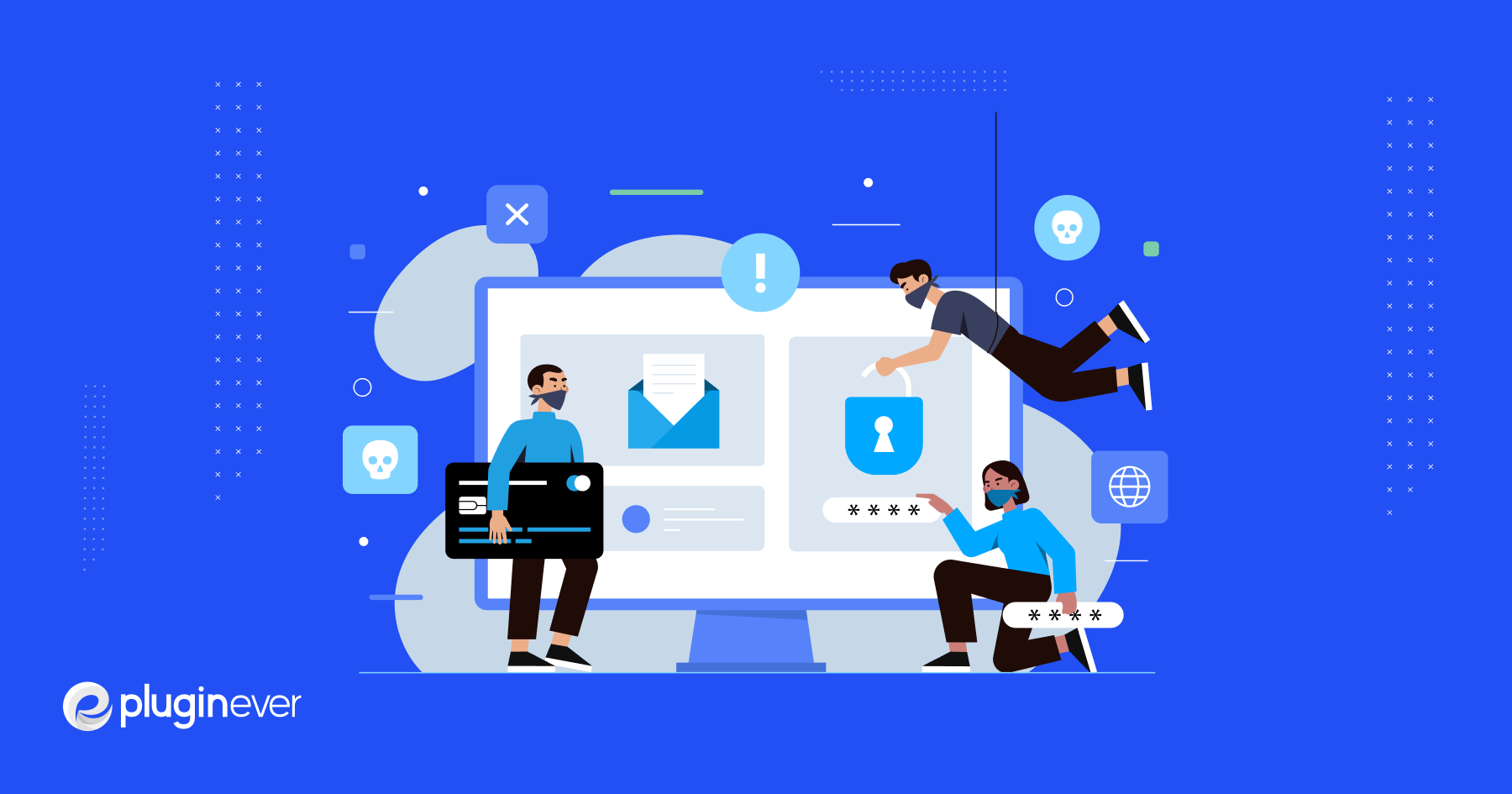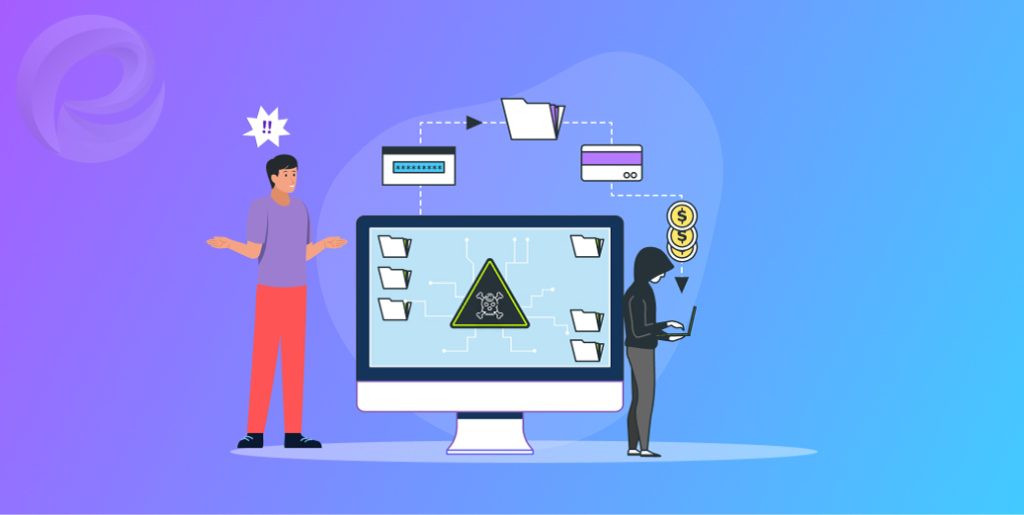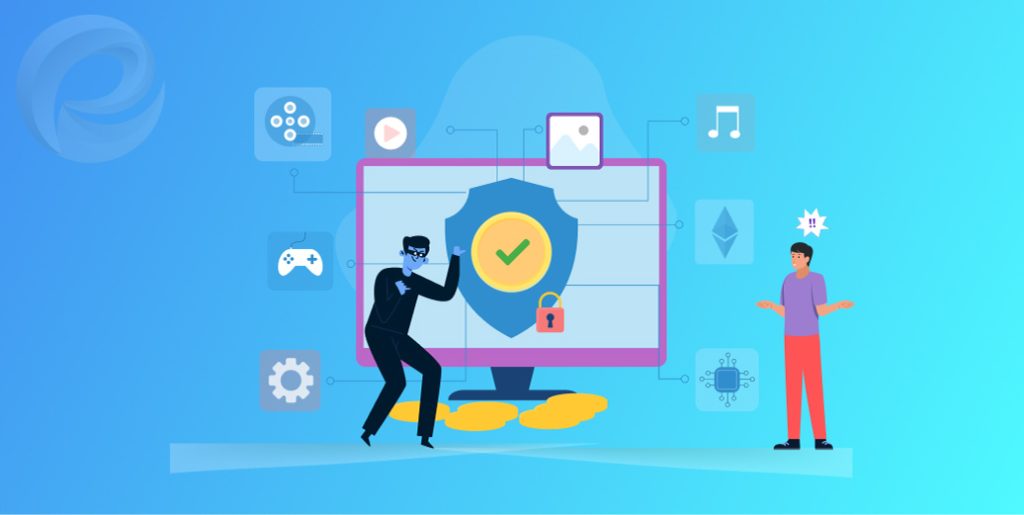Prevent Digital Product Piracy in 2025

Digital Product is now one of the most lucrative ways to expand businesses and increase profits. For selling digital products, WooCommerce has become a go-to choice for many entrepreneurs and businesses. However, with the rise of digital products comes the issue of piracy.
But can you protect digital products from digital piracy using WooCommerce?
Let’s find out, shall we?
Digital piracy is a prevalent threat in the online world. This can lead to a potential loss of revenue, reputation, and trust for business owners. Your digital products can be easily shared, downloaded, and distributed without your permission. This will cost your revenue and harm your business reputation.
In this article, we will explore the various measures to protect your digital products on your WooCommerce store.
So without further ado, let’s keep your digital business secure!
What is Digital Product Piracy

A digital product is an intangible product that can be sold or distributed online. These products can range from e-books/PDF files and software programs to music, movies, and video games.
In today’s digital age, it’s easier than ever to distribute digital products and services to a global audience. Piracy remains a constant threat despite better accessibility.
The popularity of digital products is on the rise due to their convenience and accessibility. These downloadable products are easy to distribute, and customers can have them instantly without having to wait for physical shipments.
However, digital products have the risk of piracy, which can lead to revenue loss for the creators and businesses.
Digital product piracy is the unauthorized use, reproduction, or distribution of copyrighted material, including music, movies, video games, and other digital downloads.
It may appear innocent, but it can devastate the creators who spent time, effort, and money on these things.
How to Prevent Digital Products from Piracy

Preventing digital product piracy is essential for creators and businesses that rely on selling and distributing digital products. Digital downloads are particularly vulnerable to being stolen and illegally distributed by third parties.
This can lead to severe financial damage to the legitimate owners of those products.
Piracy can affect the ability of businesses to make money and stay in business if you don’t prevent it. Also, piracy makes original content less valuable. This makes creators less likely to put their time and money into new projects.
Protecting digital products from piracy makes sure that creators and businesses keep control of their intellectual property. This way they can get paid fairly for their hard work. This lets them keep making new content and growing the economy.
Let’s look at some of the ways you can stop someone from stealing your digital products.
Use Digital Rights Management (DRM) Solutions

The term “digital rights management” (DRM) refers to a suite of tools used to control who can see specific downloadable files of media or applications downloaded from the internet. Digital rights management systems (DRM) are a type of digital security software.
DRM solutions ensure that digital content cannot be copied or distributed without the rightful owner’s permission.
This allows you to encrypt your digital product and restrict who can access it, for how long, and what they may do with it.
You can limit the product’s accessibility by deciding who can view it, print it, and distribute it.
As an alternative, digital rights management (DRM) tools can help you keep tabs on how your content is being used. You can learn a lot about the demographics of your audience and where they are located simply by looking at the IP addresses of the devices they use to access your content.
Digital rights management is a powerful tool for controlling user access to your material and protecting your intellectual property.
It can help you enforce copyright laws, stop the illegal distribution of content, and acquire valuable insights into how your content is used.
Including DRM solutions in your WooCommerce store can help you enforce copyright laws and guarantee that your products are being used appropriately.
You may check out WC Serial Numbers for selling digital products on your WooCommerce store.
Watermark Your Digital Files with Unique Identifiers

Watermarking digital files with unique identifiers is a useful way to deter piracy of your content. A digital watermark is a unique identifier that is embedded into the digital file, making it easy to identify who the original owner of the file is.
This can be done by adding text, logos, or images to the download file in a way that does not affect its usability or quality.
Watermarking can help to deter piracy by making it difficult for individuals to claim ownership of the file. If a digital product file is copied or shared without permission, the watermark can be used as evidence to prove ownership and take legal action against the infringing party.
It can also discourage unauthorized use, as the watermark serves as a visible reminder that the file is owned by someone else and should not be used without permission.
Watermarking can also be an effective way to track the distribution of your content. If a file is shared without permission, the watermark can be used to track where the file originated from and where it has been shared.
This can provide valuable insights into how your content is being used and allow you to take appropriate action if necessary.
Overall, watermarking your digital files with unique identifiers is an effective way to deter piracy and protect your intellectual property. It can serve as evidence of ownership, discourage unauthorized use, and provide insights into how your content is being distributed.
Employ Safe Distribution Methods

Employing safe distribution methods is a crucial step in preventing the unauthorized use of your products. Safe distribution methods involve implementing measures that protect your products from theft, piracy, or misuse during the distribution process.
This can be achieved by using secure channels and ensuring that only authorized personnel have access to the products. One effective method is to implement physical product protection, clear policies, and agreements that allow you to control who can access your products and how they can be used.
Security measures such as encryption, password protection, and restricted access ensure that your products are only accessed by authorized individuals.
Another safe distribution method is to use physical product protection, such as tamper-evident packaging, anti-counterfeiting measures, and security tags. These measures make it difficult for unauthorized individuals to access your products or create counterfeit copies, deterring theft and piracy.
It is also important to have clear policies and agreements in place with distributors and retailers to ensure that they are aware of and comply with your distribution methods.
This can include agreements on how the products can be displayed, sold, and used, as well as monitoring and reporting requirements to detect and prevent any unauthorized use of your products.
Using digital product distribution platforms such as WooCommerce, you can protect your products from theft, piracy, and misuse and ensure that they are used only as intended.
Monitor Your Digital Products & Take Rapid Action

Monitoring your digital products for indications of piracy is crucial for protecting your intellectual property. Digital product piracy can result in lost revenue, brand damage, and legal implications.
This will allow you to identify and prevent any unlawful use of your products. Anti-piracy software that can detect and track instances of piracy is an effective means of monitoring.
Determine where your products are being illegally downloaded or distributed. Also, investigate how and where your products are being utilized. Also, it can assist you to identify the source of piracy, allowing you to take action against the culpable parties.
Monitoring user reviews, feedback, and social media outlets for indicators of piracy is another technique. Users may mistakenly provide information about how they received your product or share download links to illegal copies.
By monitoring these channels, you can discover any unauthorized use of your products and take appropriate action.
After identifying cases of piracy, it is essential to take appropriate action. This may involve mailing cease-and-desist letters, filing takedown requests, or pursuing legal action against the infringer.
Also, it is essential to have clear policies and contracts in place with distributors and retailers to ensure that they are aware of and comply with your anti-piracy policies.
You may prevent the illegal use of your products and protect your business by employing anti-piracy software, monitoring user feedback and social media, and taking action against cases of piracy.
Use Cloud-Based Storage to Store and Share Your Digital Products

Protect your digital products while storing and sharing them with others via cloud computing. The advantages of cloud storage over more conventional means of data storage include more convenience, scalability, and safety.
Using a cloud-based storage service is a great way to safeguard your digital assets from theft, loss, or damage while still allowing authorized users easy access. Better accessibility is a perk of using cloud storage.
You can work from home or in a team from anywhere in the world as long as you have an internet connection and keep your digital files in the cloud. Businesses that use freelancers or teams whose members work from afar may find this especially useful.
Scalability is another advantage. With cloud computing, you may quickly increase or decrease your storage based on how much or how little your organization really uses its storage. This can be especially helpful for firms that have ever-changing storage needs or are expanding quickly.
Another major perk of cloud storage is how safe it is. To prevent data loss, theft, or tampering, cloud storage services frequently employ stringent security protocols including encryption and multi-factor authentication.
In addition, cloud storage companies typically have specialized teams tasked with monitoring and responding to security risks, further ensuring the safety of your data.
With cloud storage, you can prevent your digital product piracy. Keeping your digital files safe from theft, loss, or damage while yet making them conveniently available to authorized users.
Spread Awareness about the Danger of Digital Product Piracy

Educating your customers about the dangers and outcomes of piracy is crucial. The best way to safeguard your intellectual property is to inform your customers of the dangers of software piracy and the penalties for engaging in this practice.
When software is pirated, it can cost you money, hurt your reputation, and even get you in trouble with the law. It’s always better to Include warnings about the dangers of software piracy on your website and documentation. It is a great way to inform your customers and discourage illegal copying.
Warnings or official copyright notices regarding the legal ramifications of piracy and the significance of protecting intellectual property rights. Also, you can inform your clientele base via social media, newsletters, and other ways.
Customers are more likely to respect your intellectual property rights if you educate them about the dangers of piracy and the effects of not doing so.
You can also provide discounts or special content to clients who legally buy your digital stuff. Customers will persuade to stick to the law and prevent themselves from doing piracy.
Use Legal Measures to Protect Your Intellectual Property Rights

Legally protecting your intellectual property rights is essential for digital business security and competitiveness. Where digital rights management and piracy monitoring fail, legal action comes in.
A cease-and-desist letter can protect intellectual property. This official notice requests that a party using your intellectual property illegally stop. This letter can help stop violations.
Another crime is suing the offender. This may include seeking compensation for lost revenue and brand damage and an injunction to prevent additional IP infringement.
For certain conflicts, these solutions may be cheaper and faster than judicial proceedings. Before initiating legal action, consult an attorney to ensure you have a good case and understand the risks and costs.
Stay Up to Date with the Latest Trends in Digital Product Piracy

Monitor piracy trends to protect your digital items and intellectual property. To stay ahead of current piracy, adapt to their ever-changing strategies and technologies.
Trade groups and cybercrime and copyright protection seminars and conferences are wonderful ways to stay current.
Don’t forget to monitor the regulatory landscape and any alterations to the law that may affect your intellectual property. The evolution of the law allows you to meet the requirements of any new rules.
Wrap Up

The prevalence of piracy remains a significant concern for creators and innovators to safeguard their work. Fortunately, there are various strategies that content owners and distributors can adopt to prevent unauthorized access to their digital products.
As we step into 2025, it’s essential to continue exploring new and innovative ways to prevent digital product piracy. By working together, we can create a more secure and sustainable digital environment for creators and users alike.
However, effective piracy prevention goes beyond technical measures. It requires a collaborative effort from stakeholders across the industry, including policymakers, industry associations, and digital platforms.
That’s all for now, until next time.
Adios!